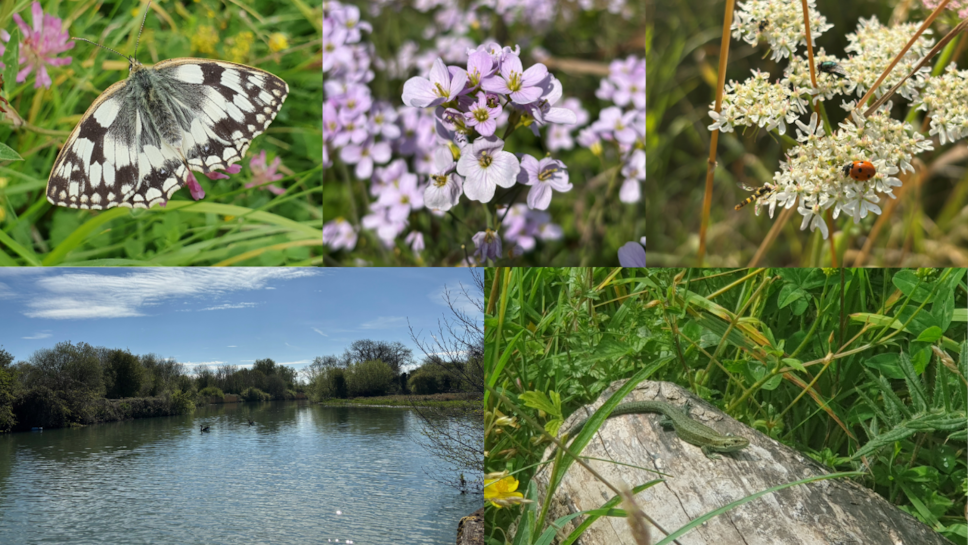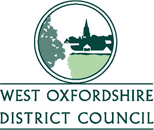
West Oxfordshire backs ambitious new nature recovery strategy for Oxfordshire
West Oxfordshire District Council has endorsed a new countywide strategy aimed to restore and enhance nature across Oxfordshire, a key step in addressing the climate and ecological emergency declared in 2019 by central government.
The Council has formally backed the publication of the Oxfordshire Local Nature Recovery Strategy (LNRS), a collaborative initiative led by Oxfordshire County Council. The strategy identifies what actions can be taken across the county to recover nature, while having wider benefits for our wildlife and communities, including carbon storage, pollination, food production, shade, pest control and erosion protection amongst others.
Cllr Andrew Prosser, Executive Member for Climate Change and Nature Recovery at West Oxfordshire District Council, said:
“This strategy sets a strong, shared vision for nature recovery in our county. With England recognised as one of the most nature depleted countries in the world, by identifying the best opportunities to enhance biodiversity and connect wildlife habitats, we are able to work together to restore our ecosystems and respond to climate change.
“We know residents care deeply about nature, from our rural landscapes to our urban green spaces, and the Local Nature Recovery Strategy identifies the opportunities to turn that passion into action. Whether it’s pond creation, hedgerow planting, or native wildflower meadows, we need to see more beneficial initiatives for both nature and people. We’re proud to be endorsing this vital strategy.”
The LNRS identifies a priority network of habitats (both existing and opportunities for new) that cover over 40% of Oxfordshire - including almost 41% of land in West Oxfordshire – offering opportunities to achieve our share of the global 30% nature protection target. It provides a clear and evidence-based strategy to provide more, bigger, better and joined-up habitats, support over 800 species, and deliver multiple benefits for communities; from flood protection and water quality regulation to more opportunities to enjoy nature-rich green spaces.
The strategy has been shaped through extensive collaboration between local authorities and expert organisations and individuals, with West Oxfordshire District Council playing a key role as a supporting authority. The draft strategy was subject to public consultation at the end of 2024, generating over 2,100 responses, and demonstrating strong local interest and support for nature recovery. Feedback included suggestions for additional urban biodiversity priorities, species actions, mapped areas for targeted action, and linking nature recovery with carbon sequestration (the capture and storage of carbon dioxide from the atmosphere by plants).
West Oxfordshire District Council submitted a formal response to the consultation, identifying nature recovery opportunities on Council-owned land and drawing on specialist input from planning, flooding, ecology, climate and economic development. You can read the responses to the consultation on the LNRS website and read about the changes that were made to the strategy as a result.
The LNRS will play a central role in delivering statutory Biodiversity Net Gain within developments by guiding what habitat creation and enhancement should be provided in different areas of the district.
It will also be a key consideration in shaping West Oxfordshire’s new Local Plan 2041, informing decisions on where and how growth should happen. The strategy will underpin the upcoming consultation on proposed development sites, helping shape planning policy and supporting communities in delivering meaningful nature recovery across the district.*
Crucially, the LNRS enables us to plan ahead for protecting and enhancing West Oxfordshire’s natural landscapes, ensuring long-term direction and continuity for nature recovery across the county for years to come; especially important as local government reform continues to take shape.
Cllr Lidia Arciszewska, Executive Member for Environment, said:
“The Local Nature Recovery Strategy is a powerful tool for embedding nature into everything we do, from planning and housing to farming and the management of waterways.
“It is a big step forward in how we approach the environment at a local level, helping us prioritise the right action in the right place. Whether in towns, villages or the countryside, nature recovery will benefit us all, improving health, enhancing biodiversity, and supporting more sustainable communities.”
The Local Nature Recovery Strategy offers a vital framework for restoring biodiversity and building climate resilience. Its success depends on collective action, with nature conservation organisations, landowners, farmers, foresters, councils, communities, schools and businesses all playing a role. The strategy is a call to action, a statement of hope and a promise to future generations. By directing energy and resources towards positive action for habitat and species at every scale - from gardens and green spaces to major developments - we can collectively help to restore nature and strengthen our resilience to climate change.
West Oxfordshire District Council will continue to support the delivery, review and monitoring of the LNRS alongside the other local authorities in Oxfordshire.
If you would like to get involved with the strategy, take action for nature or seek advice from local organisations involved in nature recovery, please visit the LNRS website.
Contact Information
West Oxfordshire District Council Communications Team
Notes to editors
* This is part of the council’s legal duty to “have regard” to the LNRS, but the strategy itself does not preclude development or other forms of land use. It is a tool for informing projects and to help us to plan development in a way that protects and improves the natural environment.
The full report is available here.
